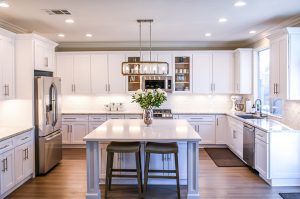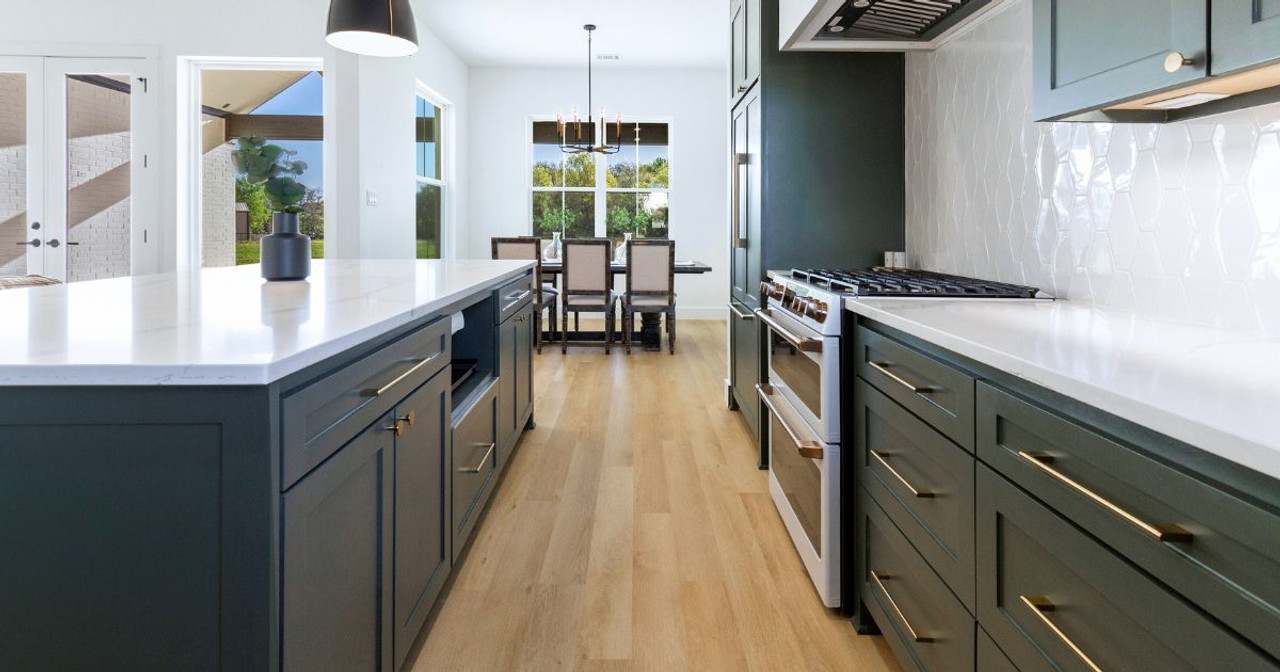Should Flooring be Darker than Cabinets?
When it comes to designing a kitchen, one of the key decisions that homeowners face is choosing the right color scheme. Among the many elements that contribute to the overall aesthetic, the combination of flooring and cabinets plays a crucial role. One common question that arises in this context is whether the flooring should be darker than the cabinets. Let’s delve into this design dilemma to uncover the considerations that can help you make an informed decision.
Harmony in Contrast.
One design principle to consider when deciding between lighter or darker flooring in comparison to your cabinets is the concept of harmony in contrast. Contrast in design can create visual interest and help different elements stand out. If your cabinets are a lighter shade, opting for darker flooring can establish a pleasing contrast that draws attention to both elements, making each one distinct within the overall kitchen space.

Creating Depth and Dimension
Dark flooring can also contribute to the creation of depth and dimension within the kitchen. The darker tones anchor the space and can make it feel more grounded. This effect is particularly noticeable in larger kitchens where the contrast between light cabinets and dark flooring adds a sense of expansiveness and sophistication. It’s essential, however, to strike the right balance to avoid overwhelming the space with too much darkness.
Consider using variations in materials and textures to add interest to a dark floor. For example, a dark hardwood floor with a matte finish can provide a different visual experience compared to a glossy dark tile. Experimenting with textures allows you to achieve depth without relying solely on color contrast.
Light and Airy Aesthetics
On the flip side, there’s a growing trend towards lighter, airier aesthetics in kitchen design. Many homeowners opt for bright and open spaces that feel inviting and spacious. In such cases, lighter flooring paired with light or neutral cabinets can contribute to a seamless and cohesive look. Lighter floors reflect natural light better, making the kitchen appear more luminous and expansive.
Visual Cohesion and Flow
Choosing flooring that is lighter than your cabinets can enhance visual cohesion and flow in the kitchen. This is especially advantageous in smaller kitchens where creating an illusion of space is key. Lighter flooring extends the eye, making the room feel more open and connected. It also allows other design elements, such as countertops and backsplashes, to become focal points without competing for attention.

When selecting lighter flooring, consider options like light-colored hardwood, white or light gray tiles, or even pale-colored natural stone. These choices not only contribute to the overall brightness of the space but also offer a neutral backdrop that allows other design elements to shine.
Practical Considerations
Beyond the aesthetic aspects, practical considerations should also play a role in your decision-making process. Lighter floors tend to show less dirt and scratches, making them a practical choice for high-traffic areas like the kitchen. If you have a busy household or pets, lighter flooring might be a more forgiving option in terms of maintenance.
Maintenance and Longevity
Consider the long-term maintenance of your chosen flooring. Dark floors can show dust and pet hair more easily, requiring more frequent cleaning. Lighter floors, on the other hand, might hide these imperfections better, providing a cleaner appearance between cleanings. Assess your lifestyle and willingness to invest time in maintenance when deciding on the color of your kitchen flooring.
Additionally, think about the longevity of your design choices. Trends come and go, but classic and neutral color palettes often stand the test of time. If you’re unsure about committing to a bold design statement, opting for a timeless combination of lighter flooring and cabinets might be a safer bet.
Personal Style and Preferences
Ultimately, your personal style and preferences should be the guiding factors in your decision-making process. While design principles provide valuable insights, your kitchen should be a reflection of your taste and lifestyle. Consider the colors that resonate with you and make you feel comfortable in your own space.
Expressing Individuality Through Design
Your kitchen is a space where you express your individuality and create a haven that suits your lifestyle. If you love the drama of dark floors paired with light cabinets, or if the serenity of a light-on-light palette speaks to you, embrace it. The beauty of design is its ability to showcase diverse tastes and personalities.
Experimenting with samples, consulting with design professionals, and visualizing the end result can help you gain confidence in your decision. Remember that trends may come and go, but a well-thought-out design that aligns with your personal style will always be in vogue.
Conclusion: Finding Your Balance
In conclusion, the decision of whether flooring should be darker or lighter than cabinets depends on various factors, including your design preferences, the size of your kitchen, and practical considerations. Whether you choose to create contrast with dark floors and light cabinets or opt for a cohesive look with lighter tones throughout, finding the right balance is key.
Ultimately, the goal is to create a kitchen that not only looks beautiful but also functions well for your lifestyle. By carefully weighing the pros and cons of different color combinations, you can make an informed decision that results in a kitchen space that you’ll love for years to come.

